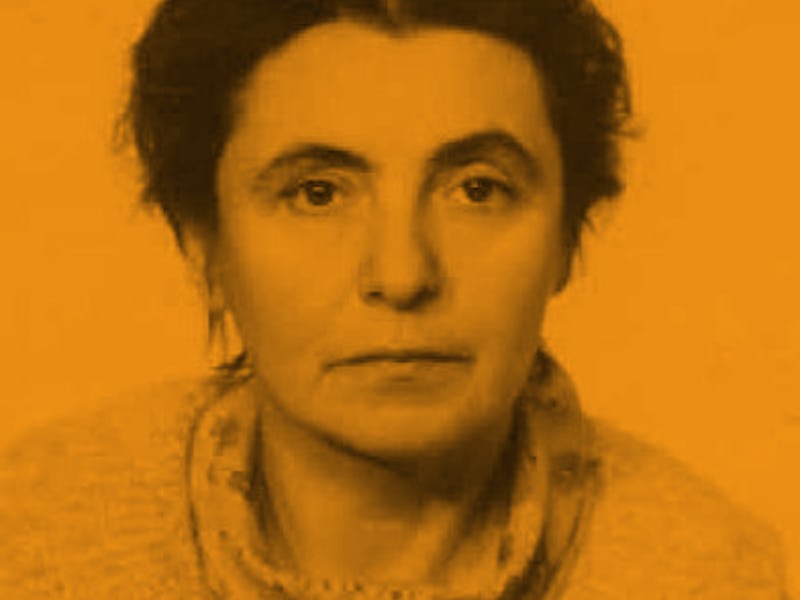Olga Ladyzhenskaya: 3 Innovations That Owe a Debt to Her Brilliance
From weather forecasts to video games, Ladyzhenskaya's work had an outsize impact.

The Greek philosopher Pythagoras coined the phrase, “numbers rule the universe,” and thousands of years later, Olga Ladyzhenskaya is a shining example of that wisdom. Despite being blacklisted from Leningrad State University, the defiant Russian mathematician went on to a stunning academic career whose impact can be seen in everything from video games to weather forecasting. Google commemorated on Thursday what would have been Ladyzhenskaya’s 97th birthday with a front-page Doodle.
Ladyzhenskaya is best-known for her work on fluid dynamics, a field of study that took up the majority of her time starting in 1961. Specifically, by using a set of 19th-century equations known as the Navier-Stokes equations, Ladyzhenskaya’s published work was able to distill motion of viscous fluids down to a handful of variables. This work made the movement of gooey substances predictable, a breakthrough that went on to allow scientists, engineers, and even video game designers to model and recreate the movement different types of liquids.
“The problems closest to her heart…always have been the equations of hydrodynamics, in particular, the Navier-Stokes equations, to which she has made deep and lasting contributions,” wrote German mathematician Michael Struwe in a recount of her achievements.
The movement of liquids might not seem like a wildly practical discovery, but Ladyzhenskaya’s breakthroughs in developing Navier-Stokes equations led to a series of inventions that are still taken for granted today.
3. Weather Prediction
Every time you remember to grab that umbrella on your way out the door, you owe a small debt to Ladyzhenskaya’s. You know those weather segments they run on the news that depict cloud patters using swirling masses of green, yellow, and red blobs that hover over the Earth? The ubiquitous weather graphics seen on TV or online are all powered using a series of fluid-dynamics equations, many of which were advanced by Ladyzhenskaya.
Those liquid-y swoops and swirls are all generated by numbers spit out by fluid dynamics formulas among others.
Computer scientists and software engineers code these equations to constantly spit out new numbers based on data fed to them by satellites, weather balloons, and data gathered from meteorological ground stations. While modern day technology like augmented reality has given us all new ways to visualize future weather patterns, it’s still thanks in part to our understanding of fluid dynamics that these innovative approaches are even possible.
2. Cardiovascular Modeling
In addition to helping us better understand the world around us, the Navier-Stokes equations have allowed scientists to better understand a vicious fluid inside of every human: blood.
Being able to model how blood flows through our arteries, the heart, and our bodies’ many crevices is essential for helping us better understand cardiovascular diseases, which were the leading cause of death in the United States in 2017 according to the Centers for Disease Control.
There have been multiple research papers, some of them published as recently as 2017, that propose using Navier-Stokes equations to recreate blood flow in the human body. Roughly 16 years after Ladyzhenskaya’s death, her work is still being used as the foundation for cutting-edge science.
1. Liquids in Video Games
The late mathematician has even had influence over virtual worlds. The water in certain video games or 3D-rendered animations can be recreated using Navier-Stokes equations, with some minor tweaks.
You can thank Navier–Stokes equations for making those waves look so real.
The technique was first patented by computer scientists at the University of Central Florida in 1996, and later recreated by researchers at the University of Toronto. Both studies explained how to solve the two-dimensional Navier-Stokes equations and then re-map their findings to translate them into 3D. This allowed for dynamic-looking digital oceans and lakes without requiring a lot of computational power.
“The method achieves realistic real-time fluid animation by solving the physical governing laws of fluids but avoiding the extensive 3D fluid dynamics computation,” writes the UCF team.
The influence of Ladyzhenskaya’s has even moved past the physical world.